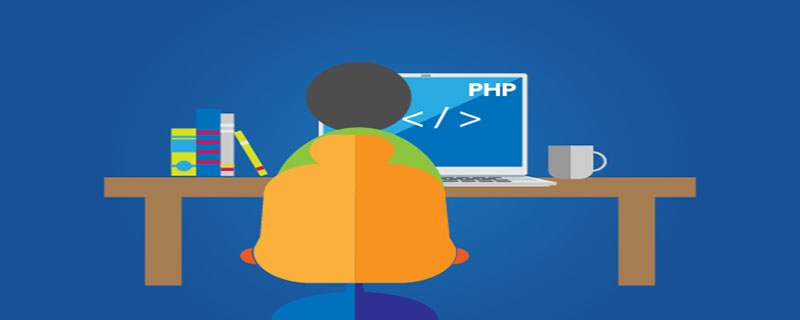
php is a language, and the basic level is mainly written in C.

PHP is inherited from an old project called PHP/FI. PHP/FI was created by Rasmus Lerdorf in 1995 as a simple set of Perl scripts to track information about people who visited his homepage. It named this set of scripts "Personal Home Page Tools". (Recommended learning: PHP programming from entry to proficiency)
As the demand for more functions increased, Rasmus wrote a larger C language implementation, which can access The database allows users to develop simple dynamic Web programs.
Rasmus » Released the source code of PHP/FI so that everyone can use it, and everyone can fix its bugs and improve its source code.
PHP/FI, a program designed to provide an interpreter for personal homepages/forms, already contains some basic functions of today's PHP. It has Perl-style variables, automatically interprets form variables, and can be embedded in HTML. The syntax itself is very similar to Perl, but it's limited, simple, and slightly jarring.
By 1997, PHP/FI 2.0, the second version of its C language implementation, had several thousand users (estimated) and approximately 50,000 domain name installations around the world, approximately all the domain names on the Internet. 1%. But at that time there were only a few people writing a small amount of code for the project, and it was still just a one-man project.
PHP/FI 2.0 released the official version in November 1997 after several beta versions. Soon, the first alpha version of PHP 3.0 was released, and PHP became a success.
PHP 3.0 was the first version similar to the syntax structure of today's PHP. While developing an e-commerce program for a university project, Andi Gutmans and Zeev Suraski discovered that PHP/FI 2.0 was clearly lacking in functionality, so they rewrote the code. This is PHP 3.0.
After a series of efforts by Andi, Rasmus and Zeev, taking into account the existing user base of PHP/FI, they decided to jointly release PHP 3.0 as the official successor version of PHP/FI 2.0. Further development of PHP/FI 2.0 has almost ceased.
One of the most powerful features of PHP 3.0 is its extensibility. In addition to providing end users with the infrastructure for databases, protocols, and APIs, its extensibility also attracts a large number of developers to join and submit new modules. This turned out to be the key to PHP 3.0's huge success.
Other key features in PHP 3.0 include object-oriented support and more powerful and coordinated syntax constructs.
This brand new language is released with a new name. It removes the implicit "this language is restricted to personal use only" part from the name of PHP/FI 2.0. It is named with the simple abbreviation "PHP". This is a recursive abbreviation, and its full name is - PHP: Hypertext Preprocessor.
php mixes grammatical features such as C, Java, and Perl. Its unique syntax mixes C, Java, Perl, and PHP's own syntax.
The above is the detailed content of What language is php developed in?. For more information, please follow other related articles on the PHP Chinese website!